#german spa towns
Explore tagged Tumblr posts
Text

German spas. Where nature cures. Vintage travel poster - circa 1935.
#vintage illustration#vintage posters#posters#the 30s#the 1930s#art deco#deco design#germany#german posters#german spa towns#german spas#vintage travel posters#travel posters#1936 summer olympics
11 notes
·
View notes
Photo
Relaxation, German style. A surreal tour of Germany’s spa towns, by photographer Alexander Krack.

by Doug Bierend
#spa massage#german#surrealism#Spa town#photography#photo art#Health spa#baden baden#the holy mountain#relaxation#bad#Unwind#cavetown#thermal therapy#holisticliving#Holistic#healthy#health and wellness#health treatment
10K notes
·
View notes
Photo

In German, "Bad" means "bath" and appears as a prefix in Spa towns. So where is the "Bad" part of the German speaking world ?
by HistoCarte
92 notes
·
View notes
Text

Very Long 2010 pre-season Seb Post
Under the cut you will find posts from the sebsite which include:
The RB6 car launch + RB6 specs
Seb's test days in Jerez
Test days in Barcelona (original in german + my english translation)
a short blurb on the name of the car
some pictures
masterpost // pre-season 2010
10 | 02 | 10
2010 Car Launch
Sebastian Vettel | Driver – Car 5
Sebastian Vettel’s first foray into Formula One saw him fined for speeding in the pitlane during the first ten seconds of his debut. It’s fair to say he hasn’t slowed down much since.
Fame and fortune hasn’t made any discernable impact on Seb (“What fortune?” he asks, bewildered). He still gives his cars girl’s names, argues that there are more exciting things in life than driving Formula One cars (but not many) and is proud of being taller than Rubens Barrichello. He loathes being referred as ‘the new Schumacher,’ and so is relieved to see his Race of Champions team-mate returning to F1.
Born 3 July 1987 in the town of Heppenheim, Germany, Sebastian enjoyed a successful career in karting before making an immediate impression the moment he came into open-wheel racing. Starting the 2003 season aged 15, he won five of 19 races in his debut Formula BMW year, finishing second in the German Championship. The next year he took the title, winning 18 of the 20 races (he finished on the podium in the other two but doesn’t like to talk about them).
It marked Vettel as one to watch and he duly tested F1 cars for Williams and BMW-Sauber, while moving up through the junior ranks, impressing in Formula 3 and the World Series by Renault. Vettel’s chance in F1 came when he replaced Robert Kubica as BMW-Sauber’s third driver in the second half of the 2006 season. In addition to incurring the Stewards’ wrath, Vettel’s debut during Friday practice for the Turkish Grand Prix also saw him finish the day top of the timesheets.
While the performance on track was impressive, everyone was equally knocked out by the confidence and effervescence with which the teenage Seb dealt with the garage and Paddock. The authority with which he spoke and the evident self-deprecating wit stood him out as much as the blistering pace.
Sebastian finally got his chance to race a year later, standing in for the injured Kubica at the United States Grand Prix. Still only 19, he qualified seventh and finished eighth, becoming the youngest man to score a Championship point. Later in the 2007 season he moved to a permanent seat at Scuderia Toro Rosso. He made a lasting impression on future team-mate Mark Webber (and the rear of his car) during the monsoon-hit Japanese Grand Prix at Fuji before bouncing back a week later to secure fourth place at an equally waterlogged Chinese Grand Prix.
Confirmed for 2008, Vettel didn’t have the best start to his first full season and crashed out of the first four races, mostly as a result of being dragged into other drivers’ accidents. Fortunately the crash-magnet curse was soon lifted and Vettel scored points at Monaco, Montreal, Hockenheim, Valencia, Spa, Singapore, Fuji and Interlagos – though the only race anyone properly remembers is the Italian Grand Prix at Monza.
On the back of a strong fifth place in Belgium, Vettel and Scuderia Toro Rosso went to Italy in good form. Torrential rain over the weekend failed to dampen their pace and Vettel duly became, first, the youngest driver to take pole position in Formula One history, and then the youngest race winner, having utterly dominated the race in which a rudder may have been of more use than a steering wheel.
Elevated to the senior Red Bull team for 2009, Vettel won his second, and Red Bull Racing’s first, victory at the third race of the year. He followed it with a string of podium and solid points-scoring finishes and established himself as a firm championship contender with a second, commanding victory in the British Grand Prix. He finished the season strongly with further victories in Japan and Abu Dhabi that, together with four other podium finishes, took him to second place in the Drivers’ Championship.
Definitely a follower of the ‘second is first of the losers’ philosophy, Sebastian has loftier ambitions for 2010. He lists his lifetime ambitions as winning the Formula One World Championship and beating Kimi Räikkönen at badminton.
RB6 – TECHNICAL SPECIFICATION
Chassis: Composite monocoque structure, designed and built in-house, carrying the Renault V8 engine as fully stressed member
Transmission: Seven-speed gearbox, longitudinally mounted with hydraulic system for power shift and clutch operation. AP Racing clutch
Wheels: OZ Racing, Front: 12.0in x 13in diam., Rear: 13.7in x 13in diam.
Tyres: Bridgestone
Suspension: Front: Aluminium alloy uprights, carbon-composite double wishbone with springs and anti-roll bar, Multimatic dampers
Rear: Aluminium alloy uprights, carbon-composite double wishbone with springs and anti-roll bar, Multimatic dampers
Brakes: Brembo calipers, Brembo carbon discs and pads
Electronics: FIA (MESL) standard control unit
Fuel: Total Group
Renault Engine RS27 – 2010
Number of cylinders: 8
Capacity: 2400cc
Max rpm: 18,000rpm
Number of valves: 32
Vee angle: 90 degrees
Power output: Not disclosed
Engine construction: Cylinder block in cast aluminium
Engine management: FIA (MESL) standard control unit TAG310B
Oil: Total Group
Weight: FIA minimum weight of 95kg


important: the picture on the left is - on the sebsite - called 'sebi-vettel'
10 | 02 | 10
Sebastian and the RB6
It was windy, it was cold - rain was just a matter of time. Sebastian‘s face was nearly covered by his Beanie cap, but despite the dark clouds he was in really good mood. The reason why? It was the moment when his new car was unveiled. Sebastian laughs: „Finally we are back on the track - the winter break was far too long."
Sebastian stands in front of his car and proudly he gives a short version explanation: „We were lucky to have the best of all cars during the second half of the season. That means we had a very good base right from the beginning, so we just had to develop the car. In contrast some of the opponents had to develop completely new designed cars."
The only real new part: „I got a new seat, it‘s like having a new chair. Beside that in general all the more than thousand parts of a Formula One car have been optimised. "I have a feeling I can reach my target"… So far I have not made a decision regarding the car‘s name. So ideas are welcomed.More next Friday: Today and tomorrow my team mate Mark will do the shake down and the first laps.
On Friday it will be my turn and so on Friday evening I will able to give you further information, about how the RB6´s handling qualities.
------------
Jerez Test
12 | 02 | 10
JEREZ TEST – Day Three
Driver: Sebastian Vettel
Car: RB6 – 01
Laps: 59
Best time: 1.21.783
Circuit length: 4.423 km
Fastest lap: J. Alguersuari – 1:19.919
Sebastian Vettel drove Red Bull Racing’s 2010 championship challenger, the RB6, for the first time today, as he took over from Mark Webber on day three of the current four-day test in Jerez.
After an initial run on dry tyres, Sebastian was forced to use intermediate and extremes for the rest of the day as wet weather set in from 0945hrs. The team’s plan was to focus on aero-testing, but progress was hampered by deteriorating weather. By 1615hrs, conditions were so wet on track that Red Bull Racing, in line with the other Formula One teams testing in Jerez, decided to end the session early. Despite the weather, the car ran without any problems today.
Sebastian Vettel commented; “After three months, it was good to come back and drive the car – it felt okay and we didn’t have any big issues. Obviously the weather is not ideal for us to find out more about the car, but we knew the rain was coming so we didn’t mess around this morning and went straight out to do some laps. It then rained all day, but you could face these conditions in a grand prix, so it’s important to do laps in the wet. Overall, we didn’t do enough because of the weather, but I’m pretty happy.”
Sebastian will be driving the RB6 again tomorrow for the last day of this current preseason F1 test at the Jerez Circuit.
2010 Rider on the Storm
Sebastian Vettel | Driver – Car 5
"You can't influence the weather, we have seen that today. After a three month break, I was finally able to sit in the car today and it was good fun, I am still able to drive and the car feels good. This morning I did some (a few) laps in the dry the car went well straight away, but then it started raining and I had to park the car for some time in the garage. For sure it's a shame that it wasn't dry all day but also its possible to have rain in a race and so you have to learn to keep up with diffrent weather conditions. At the moment its still very difficult to give an idea of where everybody stands due to the new rules and the big tanks. The teams are driving with diffrent fuel levels and this also keeps changing. I hope it continues raining over night so that nothing is left for tomorrow and I can speed though all day, but as I said we have to see as we can't tell mother nature what to do..."
13 | 02 | 10
JEREZ TEST – Day Four
Driver: Sebastian Vettel
Car: RB6 – 01
Laps: 90
Best time: 1.21.203
Circuit length: 4.423 km
Fastest lap: L. Hamilton – 1.19.583
Sebastian Vettel was at the wheel of Red Bull Racing’s RB6 today for the final day of the current Jerez test. It was his second day of testing, as Mark Webber had driven on days one and two.
The team’s plan was to focus on set-up work and aero testing, although the weather once again played a part and damp conditions in the morning meant Sebastian began the day on intermediate tyres.
Conditions dried by lunchtime, but a fuel pump failure in the afternoon cost the team around three hours of dry running time. Sebastian ended the day with a final long run on dry tyres.
At the end of the RB6’s first test, Ian Morgan, Head of Race Engineering said: “It’s been a productive first week with the RB6, despite the weather and lack of dry conditions. We’re pleased with the car overall, it’s showing a lot of promise.” The next test will take place at the Jerez Circuit, starting on Wednesday 17 February.
-------
Barcelona Test
26 | 02 | 10
Barcelona Test - Tag 2 (english version below)
Sebastian Vettel | Fahrer – RB6-01
Auto: RB6-01
Runden: 125
Bestzeit: 1.21,258 Min.
Streckenlänge: 4,655 km
Tagesschnellster: N. Hülkenberg (1.20,614 Min.)
Das Team fuhr seine zweite Rennwochenend-Simulation, und am Ende des Tages hatte Sebastian 125 Runden zurückgelegt.
Ian Morgan, Head of Race Engineering, sagte: „Heute erlebten wir in etwa eine Wiederholung der Renn-Simulation, die Mark gestern gefahren war. Alles lief mehr oder weniger nach Plan. Erneut stoppten wir das Auto während der Renn-Simulation. Dabei handelte es sich um eine Vorsichtsmaßnahme, um einige Dinge kontrollieren zu können. Es ging um ein kleines Problem, und wir konnten schon wenig später weiterfahren. Sebastian konnte die Simulation vor Ende des Testtages in voller Länge beenden. Wir drehten viele Runden und sind recht happy, was das Auto angeht."
Sebastian Vettel meinte: „Das war ein guter Tag - größere Probleme traten nicht auf. Im Verlauf des Nachmittags mussten wir wegen einer Kleinigkeit unterbrechen, aber bei Testfahrten ist das ziemlich normal. Während der Tests will man keine Schäden riskieren. Aus diesem Grund ist es am besten, das Auto abzustellen, sobald es im Hintergrund Alarmsignale gibt. Weil es in Jerez oft regnete, haben wir an den beiden kommenden Tagen noch viel Arbeit vor uns. Beispielsweise müssen wir mehr über die Reifen herausfinden und einige Abstimmungsarbeiten erledigen."
Sebastian Vettel wird morgen erneut zum Einsatz kommen, bevor Mark das Cockpit am Sonntag, dem letzten Testtag, wieder übernehmen wird.
Barcelona Test - Day 2
Driver: Sebastian Vettel
Car: RB6 – 01
Laps: 125
Best time: 1.21.285
Circuit length: 4.655 km
Fastest lap: N. Hülkenberg – 1:20.614
The team drove its second race simulation, and at the end of the day Sebastian had completed 125 laps.
Ian Morgen, Head of Race Engineering said; “Today we experienced about a repeat of the race simulation that Mark drove yesterday. Everything went more or less according to plan. We again stopped the car during the simulation. This was a safety measure to control a few things. It was a small problem and we could continue soon after. Sebastian could finish the race simulation in full length before end of the test day. We ran many laps and are quite happy about the car.”
Sebastian Vettel said: “This was a good day – no large problems showed up. During the course of the afternoon we had to take a break due to a small thing, but that’s pretty normal with testing drives. On test days you don’t want to risk damage. For that reason it’s best to stop the car once there’s alarms in the background. Because it rained a lot in Jerez, we have a lot of work to do in the coming few days. For example we have to find out more about the tires and do a bit of coordination work.”
Sebastian Vettel will take the wheel again tomorrow before passing it back again to Mark on Sunday, the last test day.
Barcelona Test - Tag 3 (english below)
Sebastian Vettel | Fahrer – RB6-02
Auto: RB6-02
Runden: 44
Bestzeit: 1.23,123 Min.
Streckenlänge: 4,655 km
Tagesschnellster: N. Rosberg (1.20,686 km)
Sebastian Vettel absolvierte in Barcelona beim letzten Test vor Saisonbeginn seinen zweiten Testtag. Der Tag wurde durch Regen beeinträchtigt. Morgens wurden wegen eines Mix aus Regenschauern und technischen Problemen nur wenige Runden gefahren. Der Nachmittag erwies sich als wertvoller, denn das Team arbeitete an der Abstimmung für das erste Rennen der Saison in Bahrain. Seine Bestzeit erreichte Sebastian während seiner letzten Runde des Tages. Ian Morgan, Head of Race Engineering, sagte: „Nach den nächtlichen Umbauarbeiten mit Blick auf das für heute geplante Programm waren wir morgens wegen einiger technischer Probleme spät dran. Nachdem wir nachmittags richtig zum Fahren kamen, gelangen uns drei, vier Tests bezüglich der Abstimmungsrichtung für das Rennen in Bahrain. Sie brachten uns klare Resultate. Entsprechend beendeten wir den Tag in deutlich besserer Form." Am morgigen letzten Testtag werden sich Sebastian und Mark Webber das Auto teilen.
Barcelona Test - Day 3
Driver: Sebastian Vettel
Car: RB6 – 01
Laps: 44
Best time: 1:23.123
Circuit length: 4.655 km
Fastest lap: N. Rosberg – 1:20.686
Sebastian Vettel finished his second test day in Barcelona at the last test before the start of the season. The day was affected by rain. In the morning only few laps were run due to a mix of rain showers and technical problems. The afternoon showed to be more useful because the team worked on the race setup for the first race of the season in Bahrain. Sebastian reached his best time during the last lap of the day. Ian Morgan, Head of Race Engineering said; “After the nightly work in view of the program planned for the day we were late due to a few technical problems in the morning. After we got to driving in the afternoon, we managed to do three, four setup tests for the race in Bahrain. Those brought us clear results. Accordingly we finished the day in much better form.“ Tomorrow, on the last test day, Sebastian and Mark Webber will be sharing the car.
28 | 02 | 10
Barcelona Test - Tag 4 (english below)
Sebastian Vettel | Fahrer – RB6-02
Eigentlich wären meine Tests am Samstag abgeschlossen gewesen, aber durch die schlechten Wetterverhältnisse bin ich nicht auf meine gewünschten Kilometer gekommen.
Deswegen haben wir uns darauf geeinigt, dass ich am Sonntagvormittag nochmal ins Auto steige.
Am Freitag haben wir eine Rennsimulation gemacht, das verlief mehr oder weniger alles nach Plan. Jetzt muessen wir das erste Rennen in Bahrain abwarten, heute in 14 Tagen, wo alle die Hosen runterlassen... Wir müssen bis Bahrain noch etwas an unserem Topspeed arbeiten, aber insgesamt bin ich ganz zufrieden mit meinem Auto. Übrigens: Einen Namen habe ich auch schon, aber den werde ich erst am Montag vor dem GP in Bahrain auf meiner Website bekanntgeben...
Fahrer: Sebastian Vettel/Mark Webber
Auto: RB6-02
Runden: 137 (Vettel – 76; Webber – 61)
Bestzeit: Vettel: 1.20,667 Min.
Streckenlänge: 4,655 km
Tagesschnellster: L. Hamilton (1.20,472 Min.)
Nachdem er gestern auf der Piste weniger Zeit als erwartet verbracht hatte, kam Sebastian vormittags zum Einsatz, während Mark unsere Vorbereitungen auf die neue Saison nachmittags beendete. Die beiden Fahrer standen vor ähnlichen Programmen, die das Team erfolgreich bewältigte. Die vorläufig endgültigen Abstimmungen für unterschiedliche Tankfüllungen beim Saisonbeginn wurden gefunden.
Ian Morgan, Head of Race Engineering, sagte: „Weil wir gestern etwas Zeit verloren hatten, konnten wir mit Seb nicht alles abhaken, was wir uns vorgenommen hatten. Aus diesem Grund erledigten wir heute mehr oder weniger das Pensum von eineinhalb Testtagen, weshalb wir auf insgesamt 137 Runden kamen. Das war ein ziemlicher Wirbel, aber wir haben viel geschafft.
Der letzte Test verlief gut für uns. Nach eingeschränkten Testmöglichkeiten auf trockenem Asphalt während der beiden Tests in Jerez, hatten hier die fast komplett trockenen vier Testtage zur Folge, dass wir wieder auf Kurs kamen. Im Verlauf der Woche machten wir große Fortschritte. Das waren sehr gute Testfahrten."
Zwei Wochen trennen uns nun noch vom ersten WM-Lauf der Saison, dem Grand Prix von Bahrain.
Barcelona Test - Day 4
Usually, my Tests would have concluded on Saturday, but due to the bad weather conditions I did not get to the distance I wanted. Because of that we agreed that I’d get back into the car Sunday morning. On Friday we did a race simulation where everything went more or less according to plan. Now we need to wait for the first race in Bahrain, today in two weeks, where everyone will drop their pants… We’ll have to work on our top speed until then, but all in all I’m rather happy with the car. By the way: I have a name already, but I’ll only share that one on my website the Monday before the GP…
Drivers: Sebastian Vettel/Mark Webber
Car: RB6-02
Laps: 137 (Vettel – 76; Webber – 61)
Best time: Vettel: 1:20.667
Circuit length: 4,655 km
Fastest lap: L. Hamilton – 1:20.472
After he spent less time on the track than expected, Sebastian was in the car in the morning, while Mark finished our preparations for the new season in the afternoon. Both drivers followed similar programs that the team successfully completed. The provisionally final setups for different tank fillings were found.
Ian Morgan, Head of Race Engineering, said; ”Because we lost some time yesterday, we couldn’t finish everything we set out to do with Seb. For that reason we went over more or less one and a half test days worth of work, which got us to 137 laps. That was a lot of turmoil but we managed to do a lot.
The last test went well for us. After limited testing opportunities on dry track during the tests in Jerez, the almost fully dry four days of testing here let us get back on course. During the course of the week we took great steps. These were very good test drives.”
Two weeks still separate us from the first World Championship race, the Bahrain GP.

05 | 03 | 10
In diesem Jahr nenne ich sie Luscious Liz
Einige von Ihnen wissen vermutlich schon, dass ich meinen Formel 1-Rennwagen Namen gebe.
In der vorigen Saison fuhr ich zwei Autos, die ich auf die Namen Kate und Kates dirty Sister taufte.
In diesem Jahr nenne ich sie Luscious Liz!
This year I’m calling her Luscious Liz
A few of you probably already know that I give names to my F1 cars. In the last season I drove two cars who I christened Kate and Kates dirty Sister.
This year I’m calling her Luscious Liz!
back to the masterpost
the pre-season in general
#sebastian vettel#f1#return to the 2010 season#i think it's fascinating that they already favored seb in the preseason testing#like they took half of marks day because sebby didn't get enough run time on his day? mark must have been soooooo pissed
33 notes
·
View notes
Note
Sorry for asking this I’m pretty sure you answered this for another person but I couldn’t find the post. Who was Gerti Wasner? The official Kafka website mentions her in his 'student years' so I tried looking her up but for some reason most of the results are in german and I don’t trust google translate haha
There isn't much info about her but what I gathered from the diaries is that Kafka met her when he was in Riva on a business trip and he mentions her only few times so I would assume the relationship only lasted while Kafka was in Riva (also since it was only few days, I would assume they were just friendly with each other and that's the whole "relationship")
Also Kafka wrote to Max Brod about her, noting that she was too young for him (she was 18).
This is the info from that site:
"Kafka’s second physical relationship with a woman occurred during his stay at Dr. Hartung’s sanatorium at the north Italian spa of Riva where he spent three weeks in late September and early October 1913. She is referred to in Kafka’s Diaries either as ‘the Swiss woman’ or by the initials G.W. For a long time her identity was shrouded in mystery. Only recently did Klaus Wagenbach reveal that this was Gerti Wasner and that she was not Swiss but in fact a German from the north German town of Gleschendorf not far from Lübeck and Travemünde. It also helped to clarify another reference in Kafka’s Diaries. In 1914 Kafka was intending to take a short holiday at Gleschendorf with Felice Bauer and her friend Grete Bloch. However, after breaking off his engagement to Felice he simply phoned to Gleschendorf and then spent a few days at the Danish seaside resort of Marielyst. Wagengach’s discovery, however, has recently been questioned."
#honestly i dont know much either and all thats known is whats provided in the diaries notes (which isnt much) and from the official site#asks
19 notes
·
View notes
Text
Taking a Cure and Breaking Carlsbad
Because there is really nothing new under the sun at the end of the day, some people were just as obsessed about their health as they are now.
CW for discussion of historical atrocities and capital punishment.
Taking the Waters
It was believed in the 19th century and indeed for a few centuries before that "taking the waters" from wells in certain inland towns with natural springs was good for your health. A lot of places had gained this reputation, like Bath in England and Spa in Belgium. Yep, that's where the name comes from.
You could either drink the waters, bathe in them or both. This was segregated by sex, as you would generally be naked in the latter case.
The arrival of the railways made "taking a cure" a good deal easier. Bath was connected to London by the Great Western Railway and today you can get there by 125mph train in under 90 minutes from Paddington.
So, many of the rich and famous would take holidays in these places, where they would drink the water, go on a restricted diet, take long walks and undergo various treatments, prescribed by spa physicians.
Some of these were medically sound. Some come across as quackery of the first water, pun fully intended.
Treatments included - and you can still find many of these in modern day spa facilities - mud baths, massages, seaweed wraps, steam rooms etc. There was also something called a Vichy Shower, which involves lying on a slab while being sprayed with water from multiple nozzles in a shower bar.
Yes, Vichy in France is a spa town. The reason the collaborationist government went there in 1940 is because it had a lot of hotels to put everyone up.
Karlovy Vary
Anyway, Carlsbad was the former English spelling of Karlsbad, a town in Bohemia then under Austrian rule. You may know it better under its modern name of Karlovy Vary, today in Czechia (aka the Czech Republic, its long form name), about sixty-six miles west of Prague. It has an airport, but the flights are limited there - you will generally need to go to Prague, then get a coach or train.
Three American places and one in Canada still bear the name Carlsbad, the most notable being the coastal city in California, now home to a Legoland.
The name in both German and Czech means "Charles' baths".
While there were settlements in the area going back to the Bronze Age, legend has it that Charles IV, King of Bohemia, found a warm spring by accident while exploring the local area and the waters healed his injured leg. In any event, he gave the place royal privileges in 1370.
His successor, Wenceslaus IV, would give the town a right of asylum and the place also had a ban on carrying weapons.
In 1526, Louis II would drown as he fled defeat by the Ottoman Empire at the Battle of Mohács, ending his dynasty as he had no legitimate children. Austrian Ferdinand I was elected as his successor and to cut a long story short, Bohemia lost its independence, becoming part of the Austrian Empire.
The 16th and 17th centuries weren't great for the place; a massive flood, a big fire and Swedish troops looting the place three times in seven years during the Thirty Years' War.
In 1819, the town would hold a conference of representatives from the states of the German Confederation, passing decrees increasing press censorship and banning nationalist societies among other things in an attempt to slow moves towards unification.
In the event, that unification would happen in 1871, but Austria would be excluded from the new Germany and instead unified with Hungary in the Dual Monarchy, aka Austria-Hungary. Karlsbad would be in the Austrian part of this new Empire and was in fact majority-German speaking.
Anyway, back to Karlsbad. The town was rapidly developing in popularity as a resort during the course of the 19th century and would become even more popular in 1870, when a railway line was built from Prague to Eger (now Cheb) on the border with Germany.
The railway line allowed for through carriages to operate from across Europe. In 1888, it took a day and 8 1/2 hours to get there from London. By 1911, CIWL was offering a through sleeping carriage, along with parlor/dining car from Ostend to Carlsbad, the former reachable from Charing Cross via train and ferry. The journey was now doable in 26 hours and 21 minutes.
The appeal for spa fans was clear - 80 springs with water running up to 74 degrees Celsius. Mineral water and herbal bitters were bottled and exported all over Europe. The mountain scenery and fresh air allowed people to take walks as part of their "cure."
The best-known spa by the Raffles time was the Imperial Spa, of which more later.
There were also plenty of hotels or pensions. The September 1888 Bradshaw's Continental advertises eight of them, with no less than seven boasting of English-speaking staff or indeed managers. The most famous hotel, opened in 1701 and still going strong in 2024 is the Grandhotel Pupp, which featured extensively in the 2006 James Bond film Casino Royale where it played the Hotel Splendide. Indeed, Karlovy Vary has a big starring role in that film.
Churchgoers were well-provided for, with churches for multiple denominations. The Anglican one is now a waxworks museum of all things.
Many rich and famous faces would show up at Carlsbad and nearby Marienbad. Chopin and Beethoven visited there. Anthony Joseph Drexel, founder of what is now J. P. Morgan & Co visited there in 1893... then had a fatal heart attack.
As the Redux points out, all these rich people were prime targets for thieves.
An 1884 guide to the place can be found here:
Things were going pretty swimmingly for the spa town... and then the First World War happened, rather damaging the tourist industry.
The collapse of Austria-Hungary saw the town incorporated into the new country of Czechoslovakia following the Treaty of Saint-Germain-en-Laye in 1919. Local protests in March 1919 ended in six deaths after things turned violent and Czechoslovak soldiers opened fire, but the local population of what was now Karlovy Vary soon accepted their new situation. A 1930 census made clear that the place remained overwhelmingly German in its composition.
The place didn't recover to its pre-war popularity; the Great Depression really didn't help in that department. The German-speaking areas of Czechoslovakia had a lot of industries, like toy-making, which were reliant on exports... and protectionism was now very much in vogue. There were also tensions between the German minority and the Czech majority.
Then a certain Austrian man with a toothbrush moustache came along. Karlovy Vary was in what was becoming known as the Sudetenland... and you can probably see where this is going.
In September 1938, the Munich Agreement, signed without the Czechoslovaks being involved (who had to accept it), saw the Sudetenland handed over to Germany. By March 1939, the Germans had invaded and annexed the rest of the Czech part of the country, Poland and Hungary had taken various bits of territory and a pro-Axis client state was set up in what was left of Slovakia. However, it does not seem there was any mass support for this by the Germans of Karlovy Vary.
The Nazis set up the Protectorate of Bohemia and Moravia in the Czech bits they'd got in March 1939.
While a full discussion of their horrific rule is beyond the scope of this post, Karl Hermann Frank, born in what was then Carlsbad, would be placed in charge of the Nazi police apparatus in the protectorate. He would eventually become Minister of State, the most powerful official in it and in these roles would play a primary role in the mass murder of the Jewish population in the Protectorate. He would also give the orders to destroy Lidice and Ležáky, murdering nearly all their inhabitants, in reprisal for the assassination of Reinhard Heydrich in 1942.
Karlovy Vary would play host to a Gestapo prison; I imagine the town also saw some use by soldiers on leave.
Karlovy Vary was out of the effective range of Allied bombers for much of the war but came under heavy bombing twice in the final months of the conflict; bombers heading for Dresden in February 1945 appear to have also bombed Karlovy Vary (and Prague) by mistake. The town was heavily damaged, but the spa part escaped destruction.
Karlovy Vary was part of an agreed stop line for George S. Patton's Twelfth Army Group in May 1945 as they raced east. They met some resistance as they approached (namely the dangerous 88mm guns that had to be taken out individually), but the town surrendered without a fight on 7 May 1945; German forces there just wanting to surrender to the Americans and not the Red Army, who would treat them much worse.
However, it had already been agreed that this would be an area under Soviet occupation and Patton's forces had to cross back over the restored border into Germany, handing the place over on 11 May.
The Czechoslovakian-government-in-exile had declared its German and Hungarian minorities collectively responsible for the occupation. The Allies at the Potsdam Conference agreed that Germans east of their new borders should be transferred in an orderly fashion to Germany i.e. expelled.
It would be anything but orderly. Many had already fled west to get away from the Soviets, either in organised evacuations or on their own initiative, the later continuing after the surrender. At least 100,000 civilians died in this flight from aerial attack or other causes, such as the atrocious winter of 1944-45.
Now, Czechoslovakia would kick out nearly all the rest. Germans and Hungarians had their land seized, their citizenships revoked and were sent west or north; around 1.3 million and 800,000 respectively.
Mobs and those in uniforms engaged in massacres with varying degrees of official connivance; with the harsh conditions of the expulsion as well, it is estimated by a joint German-Czech commission that 15,000 to 16,000 died, along with another 3,400 suicides.
Others ended up in internment camps, also with harsh conditions.
Those who could prove they were anti-fascists or who were essential for the economy, a number estimated up to 250,000, were allowed to stay. In other cases, Communist Party redistributed assets to Czechs in the border areas, getting a lot of support in post-war elections as a result.
The expulsion/deportation remains something of an elephant in the room in the now three countries - it was historically a much bigger issue. West Germany paid compensation to those thrown out from its own funds and the international community concluded that Czechoslovakia taking their assets meant that no reparations needed paying. A Czechoslovak law granting immunity for crimes committed in 1945 in the name of liberation remains in force. A joint agreement in 1997 saw Germany accept responsibility for Nazi crimes and Czechia express regret for the deaths in the expulsions; various attempts at reconciliation have happened. The surviving Sudeten Germans do not want their land back in general, just official recognition.
The events have come up from time to time in the politics of the area, but I shall leave that discussion for others to have.
In the aftermath, the Czechoslovaks also conducted war crimes trials of those who had engaged in such horror upon their country. Karl Hermann Frank, captured by the Americans the day after the war ended, was extradited back to Czechoslovakia, and sentenced to death by the People's Court in Prague. On 22 May 1946, he was executed in front of 5,000 people in the courtyard of Pankrác prison; it was a ticketed event with "scalpers" to boot in what would be the final public execution in Prague. It was also photographed and filmed for the media; the footage can be found easily online, so you may not want to look this up. Especially as the method of hanging was the Austro-Hungarian pole method, not a pleasant way to go.
The Communists, starting to lose popularity, sized power in a coup in 1948 and created a Soviet-aligned state.
The Grandhotel Pupp had already been nationalised, the Pupp family having been expelled and was renamed the Grandhotel Moskva in 1951.
The Karlovy Vary Film Festival began in 1946 and quickly became prominent after it introduced an international film competition two years later, by 1956, it was a top-tier festival, up there with the likes of Venice and Cannes. Moscow got jealous and forced the festival to go from annually to bi-annually; it alternated with the festival in the Soviet capital until 1993.
The need for "hard currency" such as the West German mark to be used to pay for imports into the CSSR meant Karlovy Vary continued to market itself to foreign tourists, especially West Germans. The erection of the Iron Curtain made travel to and from Czechoslovakia a lot harder, as you now needed a visa to go there from the West; there was also a mandatory foreign exchange requirement, although paying for the hotel could cover that. East Germans, who could travel to Czechoslovakia without the need for a visa, seem to have found Karlovy Vary too expensive and went to other spa towns. In any event, the Soviet invasion of 1968 that ended the Prague Spring damaged visitor numbers further, not to mention destroying the credibility of much of the Eurocommunist movement, who mostly parted company with Moscow in short order.
As for the Imperial Spa, built in 1895 and known as Spa I since 1922, it had been renovated in the late 1940s so it could operate all-year round and declared a cultural monument. However, increasing maintenance costs meant it stopped operating as a spa in the late 1980s, becoming a casino, falling further into disrepair.
Things, however, were about to improve. The Velvet Revolution of 1989 saw the largelyFilm/TheMummy1999 peaceful end of the Communist government (a lot of people were beaten up by security forces, but no-one died, although a hoax story of a death played a key part) and Czechoslovakia's return to democracy. It became two democracies in short order; it became clear that the Czechs and Slovaks had different ideas of the direction of travel for their country, so the Velvet Divorce followed in 1993, creating Czechia and Slovakia. Both countries would maintain good relationships with each other and join the EU together in the 2004; Czechia retains the koruna, having not yet joined the eurozone.
In 1990, Karlovy Vary got city status as the tourists came back. The Grandhotel Pupp got its name back - a deal being reached with the family in 1992 for use of the trademark. The film festival returned to being an annual event, only being skipped in 2020 for obvious reasons, although a shorter festival happened in November. In 2024, the Crystal Globe was won by A Sudden Glimpse to Deeper Things, a British documentary on an abstract artist called Wilhelmina Barns-Graham.
The Imperial Spa was declared a national monument in 2010 and a renovation began in 2019, allowing the place to fully reopen in 2023.
I think that's a good place to end it. I am now thinking of going there myself...
7 notes
·
View notes
Text
Tourist Railway Molli in Bad Doberan
Narrow gauge tourist railway Molli in Bad Doberan, Mecklenburg-Western Pomerania
In 1886, Grand Duke Frederick Franz III. of Mecklenburg concessioned a steam-driven tramway in the spa town of Bad Doberan, which opened in the same year, using the rare gauge of 900 mm. With the boom in tourism at the baltic sea coast in the years around 1900, there was a need to connect Bad Doberan with the coastal resort of Arendsee, and the tram was extended and re-classified as a light railway. Today, the railway is part of the regional train network. Tourist trains are still operated with steam engines, although diesel engined exist. The steam engine shown here was built in 2009, being the first newly built steam engine in Germany in more than 60 years. Hovever, older engines built in the early 1930s are still in operation. The passenger cars originate from 1911 to 1930. Molli received international fame when it carried members of the press from Bad Doberan to the 33rd G8 summit at Heiligendamm in 2007.
There are several legends about how the railway got its name. One of them tells the story of an old lady, who traveled to Bad Doberan with her fat little pug named “Molli”. Of course she also wanted to take the newly opened steam railway from Bad Doberan to Heiligendamm. But under no circumstances could her pug be persuaded to get in. When the train started moving, the little pug panicked, broke loose and ran away barking. Frightened, the old lady called out: “Molli, bliev stahn!” (Low German: Molli, stop!) But the panicking little pug didn't listen to this call. Instead, a sudden jolt went through the train that had just started. The train driver thought the lady had meant him and his train and had applied the brakes. The train stopped screeching and grinding — and from then on the little tourist railway was popularly known as “Molli”.
15 notes
·
View notes
Text
Today I decided it will be a good day to talk about a private RP project I’m a part of in one secret TMA server which I share with @the-symphony-of-lydia-brown, @envisionedeternity and @thistlesandstories from our irl friend group and @mersilisk as the guest star and amazing antagonist.
I don’t post much and especially not for The Magnus Archives but I admit the podcast is very important to me. My favourite thing about it is the Regency Harem™️ and the historical episodes. Intertwining the lore with the actual historical events and characters is just amazing.
My irl friends know that I have certain level of interest in military history, and therefore I decided to make a use of it and suggested a plot line for a private RP - a short prequel story for Robert Smirke and young Jonah Magnus meeting. Also, we wanted a Slaughter story because there’s way too little of those in the podcast.
And the background is… The Napoleonic Wars. My beloved @thistlesandstories is a reenactor from that era and therefore they got very excited about the project. The excitement grew contagious and turned @the-symphony-of-lydia-brown into a proper horror DM.
The plot line so far:
Europe, 1811. Napoléon Bonaparte decided to be the problem. Given his notable military accomplishments, the Slaughter just couldn’t leave him unnoticed. After all, the concept of the Total War is born. One day, the Slaughter had came to the young Napoléon and offered him that he would become the greatest warrior of all time. The First Consul of France has agreed.
The Slaughter is rising, therefore it is convinced that the time has come to attempt a ritual. But for a war ritual you sorta need to have two sides, right. There are plenty of “other sides” - and there is one talented general, very dedicated to defending his country. Honourable and skilled man - Viscount Arthur Wellesley, soon to be the Duke of Wellington. Wellington was not having a great time in the Portuguese campaign as his forces were being pushed out by the French, when the Slaughter called to him - offering a victory in exchange for his service. Wellington considered, out of loyalty, he agreed with the nightmarish pact.
The situation improved as now the British and Portuguese army set up an attrition trap with the French falling in. Then guess what - the Slaughter calls again. (The attrition war is usually not exactly Slaughter aligned thing. The soldiers die of starvation, freezing, sickness, which is inherently a corruption thing - The Slaughter wants the bloodbath). Now, the Slaughter has called for a French man again - Marshal Michel Ney, said the Bravest of the Brave, known for his extremely risky approach to the war. An ideal candidate, so it seems . When the French finally retreated and Ney successfully bought their exhausted troops some time by his rearguard actions, the Piper showed up to him, offering him the victory. However, the French marshal has none of that shit and literally tells the War itself to shut the f**k up. Obviously, the Slaughter hates him now.
But now it’s May 1811. Now, time for some historical liberties, yay! Ney lost his command after he disrespected his commanding officer, and his wife convinced him to take a break - therefore they ended up chilling in a little German spa town with their children. The resort happens to be the favourite place of one of the Würtemberger aristocrat Albrecht von Closen. This young man decided it would be nice to invite his British friend Jonah Magnus.
Jonah is very young, he just turned 18, he inherited notable amount of money from his deceased uncle and he has many admirers for his intellect and general charms. However, even now, Jonah is more of a cold academic, a silent observer, with little interest in changing the world. He only wants to know and to understand. And he is just as cold to his companion, sir Barnabas Bennet, who is not really financially stable, but somehow he managed to incite himself to go with Jonah. Barnabas is like a pure opposite of Jonah - hot headed, adventurous and painfully irresponsible.
The last guest to arrive is… nobody else than Viscount Wellesley himself. He has earned a short period of leave and he just picked the same recreational spot as his enemy, Ney. It’s not a coincidence however, the Slaughter is still feeling petty and it wants to ruin Ney for his insolence. The future victor of Waterloo seems to be a good tool for ruining the Marshal’s involuntary holiday.
Oh well. He might not be the last to arrive. There is one more man, who will go down the TMA history - a certain gifted character in his early thirties, working hard on something barely connected to the architecture. Maybe it has something to do with his paranormal obsession. Ladies and gentlemen, welcome sir Robert Smirke!
So yes. The scene is all set. So far it goes very well. Except… it is not.
The disasters are here!
Jonah Magnus seems more interested in Wellesley than in his travel mate Barnabas. Out of desperation, Barnabas decides to finally confess his feelings for Jonah. It went well in his head. He approached the armchair in the lounge, seeing those rich copper curls. He took a deep breath and finally kissed him… Only to realise that Jonah Magnus is not the only one to sport this hairstyle. Red-haired marshal Ney is not amused and his first instinct was hitting the perpetrator right in the face and showering him with list of French profanities.
Albrecht von Closen has really bad feeling about Arthur Wellesley. He is himself a very sensitive and observant man and he disapproves of Jonah’s interest in the famous British commander. It is not the first gut feeling of this kind Albrecht had and he is not exactly sure what to do with that. He meets an unlikely ally - very angry Marshal Ney who is certainly not happy about Wellesley’s presence either.
Robert Smirke found what he was looking for- the presumed Slaughter avatar, aka the Napoleon’s bravest Marshal (please consider that Smirke is a Brit and therefore the idea of future Duke of Wellington as the avatar of the Slaughter is just unimaginable to him). The architect is not exactly a good candidate for a spy and therefore he gets noticed by Ney’s children who decide to take the situation in their hands and reveal the man who keeps stalking their father.
This happened so far. But the plot shall go on because… Enter The Stranger!
The Stranger is still obviously pissed after the Slaughter’s agents ruined their ritual in 1787. So it wants a revenge. And the ideal idea of their revenge is taking the Slaughter avatars one by one and turning them into waxworks. And obviously, their victim is the Napoleons’s marshal Ney.
Jonah Magnus is getting bored of relaxing and he is ready to meet a new friend: the famous Robert Smirke. The man, who will unknowingly bring the Apocalypse two centuries later.
The reasons for posting this is the following:
It’s 255th birthday of Michel Ney! He was originally meant to be a background character, but he sort of stole the show. I might or might not be responsible since I’m the one playing the gingers.
Also, this post might or might not work as a peer pressure for @the-symphony-of-lydia-brown to turn it into a fic 👀
The special acknowledgment goes to @thistlesandstories because we have discovered that somehow we really enjoy fighting with each other after six years of being together. The prequel for Ney and Wellington in Portugal was the best part of this year’s Christmas. I’m still crying for the French officer taken by the Piper though I also love the amount of research it goes into this activity. We ended up with new books on Ney and Wellington.
Credits:
Albrecht von Closen, Aloys Ney: @the-symphony-of-lydia-brown
Robert Smirke: @envisionedeternity
Arthur Wellesley, Barnabas Bennett, Eugène Ney: @thistlesandstories
The Stranger Danger, Léon Ney: @mersilisk
Jonah Magnus, Michel Ney: Me, because I’m all the gingers
#the magnus archives#tma fic#tma rp#tma jonah magnus#barnabas bennett#robert smirke#regency harem#napoleonic era#Napoleonic fiction#arthur wellesley#michel ney
18 notes
·
View notes
Text
The telegram was from Carlsbad, of all places for Raffles of all men! Of course there was only one thing that could possibly have taken so rare a specimen of physical fitness to any such pernicious spot.
Calsbad does not refer to the Calefornian town here but to Karlovy Vary, or Karlsbad in German, a beautiful Chech town famous for its thermal springs, which result from old vulcanic activity. Countless spa facilities have been using these warm waters, which are thought to have healing properties, for a long time. So Bunny's confusion is understandable: the far majority of visitors to places like this are those elderly and ill of health, which Raffles is neither.
Several middle European countries have a rich spa tradition. My German teacher told us once that you used to be able to get time off work in Germany for visiting baths - they were seen as essential to wellbeing. I have visited spas in Germany, Austria and Hungary myself, and always had a good time, though not as much fun as in a Finnish sauna in the middle of nature. The average age really is very high and hygenic rules can be very strict - for example, sometimes a bathing cap is mandatory. But bobbing in warm water while you look out towards snowcapped mountains is pretty incredible.
#letters from bunny#an inaugural banquet#chapter 1#raffles#cricket and crime#be gay do crime#mr. justice raffles
5 notes
·
View notes
Text
Resorts of the Victorian era
Resorts of the Victorian era hold a special place in history as destinations for leisure, health, and cultural exchange. During this period, approximately from 1837 to 1901, England and Europe experienced a significant development of the resort industry due to the growing popularity of water treatments and mineral spring therapies.

One of the most famous resorts was the German town of Baden-Baden

In the Victorian era, it attracted members of the British aristocracy and high society, who came not only for the healing waters but also for the vibrant social life.

In Baden-Baden, visitors spent their time in elegant casinos, attending concerts, theaters, and luxurious spa complexes. This resort combined health care with high-level entertainment.

In the mid-19th century, the cost of staying in hotels in Baden-Baden could range from about 5-10 German talers (or gulden) per day for a room in a mid-level hotel. In luxury hotels with top-tier amenities, the price could go up to 20-30 talers or more. This amount typically included breakfast as well as access to resort services such as baths and mineral water treatments.
For comparison, the monthly salary of a worker at that time could be around 20-40 talers, which made such resorts affordable only for the wealthy.

5 notes
·
View notes
Text
Following the armistice signed on 22 June 1940, the zone which was not occupied by the Germans took the name of the French State (État Français) (as opposed to the traditional name, République Française or French Republic) and set up its capital in Vichy on 1 July, because of the town's relative proximity to Paris (4.5 hours by train) and because it was the city with the second largest hotel capacity at the time. Moreover, the existence of a modern telephone exchange made it possible to reach the whole world via phone.
Vichy was chosen as the de facto capital of nazi France because of its large number of hotels! (It was and is a resort/spa town)
16 notes
·
View notes
Text
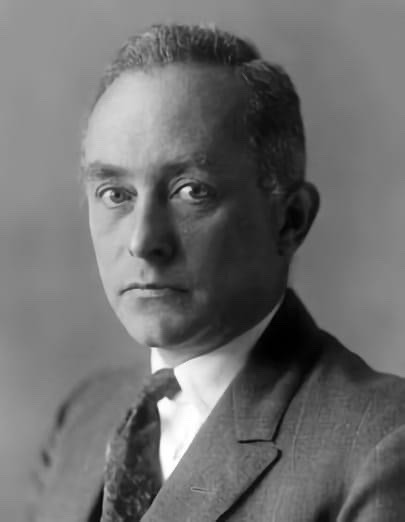
Max Born was born in Breslau #OnThisDay the 11th December, 1882, to Professor Gustav Born, anatomist and embryologist, and his wife Margarete, née Kauffmann, who was a member of a Silesian family of industrialists.
Max attended the König Wilhelm’s Gymnasium in Breslau and continued his studies at the Universities of Breslau (where the well-known mathematician Rosanes introduced him to matrix calculus), Heidelberg, Zurich (here he was deeply impressed by Hurwitz’s lectures on higher analysis), and Göttingen. In the latter seat of learning he read mathematics chiefly, sitting under Klein, Hilbert, Minkowski, and Runge, but also studied astronomy under Schwarzschild, and physics under Voigt. He was awarded the Prize of the Philosophical Faculty of the University of Göttingen for his work on the stability of elastic wires and tapes in 1906, and graduated at this university a year later on the basis of this work.
Born next went to Cambridge for a short time, to study under Larmor and J.J. Thomson. Back in Breslau during the years 1908-1909, he worked with the physicists Lummer and Pringsheim, and also studied the theory of relativity. On the strength of one of his papers, Minkowski invited his collaboration at Göttingen but soon after his return there, in the winter of 1909, Minkowski died. He had then the task of sifting Minkowski’s literary works in the field of physics and of publishing some uncompleted papers. Soon he became an academic lecturer at Göttingen in recognition of his work on the relativistic electron. He accepted Michelson’s invitation to lecture on relativity in Chicago (1912) and while there he did some experiments with the Michelson grating spectrograph.
An appointment as professor (extraordinarius) to assist Max Planck at Berlin University came to Born in 1915 but he had to join the German Armed Forces. In a scientific office of the army he worked on the theory of sound ranging. He found time also to study the theory of crystals, and published his first book, Dynamik der Kristallgitter (Dynamics of Crystal Lattices), which summarized a series of investigations he had started at Göttingen.
At the conclusion of the First World War, in 1919, Born was appointed Professor at the University of Frankfurt-on-Main, where a laboratory was put at his disposal. His assistant was Otto Stern, and the first of the latter’s well-known experiments, which later were rewarded with a Nobel Prize, originated there.
Max Born went to Göttingen as Professor in 1921, at the same time as James Franck, and he remained there for twelve years, interrupted only by a trip to America in 1925. During these years the Professor’s most important works were created; first a modernized version of his book on crystals, and numerous investigations by him and his pupils on crystal lattices, followed by a series of studies on the quantum theory. Among his collaborators at this time were many physicists, later to become well-known, such as Pauli, Heisenberg, Jordan, Fermi, Dirac, Hund, Hylleraas, Weisskopf, Oppenheimer, Joseph Mayer and Maria Goeppert-Mayer. During the years 1925 and 1926 he published, with Heisenberg and Jordan, investigations on the principles of quantum mechanics (matrix mechanics) and soon after this, his own studies on the statistical interpretation of quantum mechanics.
As were so many other German scientists, he was forced to emigrate in 1933 and was invited to Cambridge, where he taught for three years as Stokes Lecturer. His main sphere of work during this period was in the field of nonlinear electrodynamics, which he developed in collaboration with Infeld.
During the winter of 1935-1936 Born spent six months in Bangalore at the Indian Institute of Science, where he worked with Sir C.V. Raman and his pupils. In 1936 he was appointed Tait Professor of Natural Philosophy in Edinburgh, where he worked until his retirement in 1953. He is now living at the small spa town, Bad Pyrmont.
Max Born has been awarded fellowships of many academies – Göttingen, Moscow, Berlin, Bangalore, Bucharest, Edinburgh, London, Lima, Dublin, Copenhagen, Stockholm, Washington, and Boston, and he has received honorary doctorates from Bristol, Bordeaux, Oxford, Freiburg/Breisgau, Edinburgh, Oslo, Brussels Universities, Humboldt University Berlin, and Technical University Stuttgart. He holds the Stokes Medal of Cambridge, the Max Planck Medaille der Deutschen Physikalischen Gesellschaft (i.e. of the German Physical Society); the Hughes Medal of the Royal Society, London, the Hugo Grotius Medal for International Law, and was also awarded the MacDougall-Brisbane Prize and the Gunning-Victoria Jubilee Prize of the Royal Society, Edinburgh. In 1953 he was made honorary citizen of the town of Göttingen and a year later was granted the Nobel Prize for Physics. He was awarded the Grand Cross of Merit with Star of the Order of Merit of the German Federal Republic in 1959.
The year 1913 saw his marriage to Hedwig, née Ehrenberg, and there are three children of the marriage.
Max Born died on January 5, 1970.
2 notes
·
View notes
Text
Deutschribing Germany: regions
Baden-Württemberg (Baden-Württemberg)

Baden-Württemberg is divided into thirty-five districts (Landkreise) and nine independent cities (Stadtkreise), both grouped into the four administrative districts (Regierungsbezirke) of Freiburg, Karlsruhe, Stuttgart, and Tübingen. The capital city is Stuttgart.
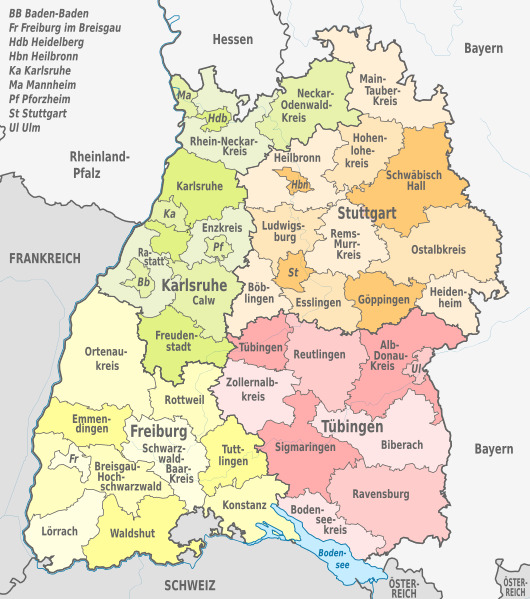
Climate
The predominant climate type is warm-summer humid continental, but the western part (Baden) has a subtropical highland climate. As a result, in most parts of Baden, the climate is warm almost all year round and summers are mostly dry, while winters are wet and foggy.
The rest of the state has more temperate temperatures, especially in summer. Areas of high elevation get snow frequently, and summers are rainier than in Baden.
Due to the climate differences, average annual temperatures range from 5 °C (41 °F) in the Black Forest to 13 °C (55 °F) in the subtropical areas.
Economy
Although Baden-Württemberg has relatively few natural resources compared to other German states, it is among the most prosperous and wealthiest regions in Europe.
The state is known for its strong industries, including car manufacturing, electrical engineering, and mechanical engineering. It hosts the headquarters of some of the largest German companies, such as Borsch, Mercedes-Benz Group, Porsche, and Schwarz Group (owner of Kaufland and Lidl).

Baden-Württemberg is also a popular holiday destination, including a variety of sights like the residential court towns of Ludwigsburg and Karlsruhe, the spas of Baden-Baden, the medieval architecture of Ulm, the Black Forest, and the traditional university towns of Heidelberg and Tübingen.
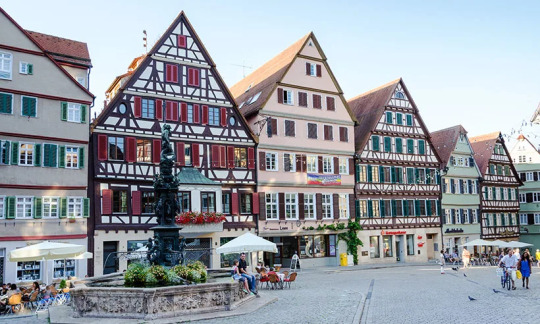
Famous people
Alena Gerber - model, actress, and TV host
Anja Jantschik - journalist and writer
Anne-Sophie Mutter - violinist
Ayla - producer and DJ
Frank Christoph Schnitzler - actor, artist, and musician
Frederik I - Holy Roman emperor
Friedrich Wilhelm Schnitzler - landowner, business manager, and politician
Jens Weidmann - economist
Sophie Weber - singer and younger sister of Mozart's wife Constanze
Walter Haeussermann - scientist
Gastronomy
There are two distinct regional cuisines: those of Baden and Swabia. The cuisine of Baden is considered one of the best regional cuisines in Germany and is based on fruit, herbs, vegetables, game, poultry, fish, smoked products, wine, and beer. It has many influences from Alsace and Switzerland. Specialties include Flammkuchen (pizza with thin crust) and Schäufele (pig's shoulder meat).
Swabian cuisine has a reputation for being rustic but rich and hearty. It is characterized by fresh egg pasta, soups, sausages, broths, and sauces. The most famous specialties are Maultaschen (meat and spinach-filled dumplings, either fried or served in broth) and pretzels.

Schäufele
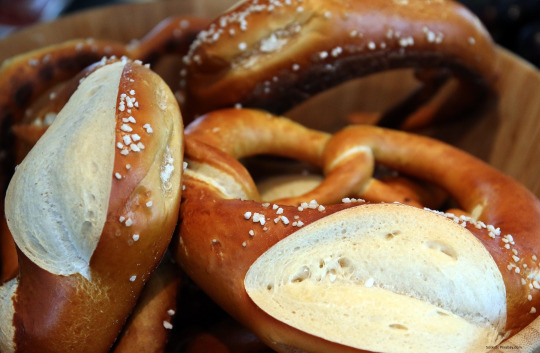
Brezel
History
Baden-Württemberg was formed from the historical territories of Baden, Prussian Hohenzollern, and Württemberg.
100 - Roman invasion of Württemberg
3rd century - the Alemanni force the Romans to retreat west
496 - Frankish invasion
915-1313 - Duchy of Swabia
1083-1495 - County of Württemberg
1112-1803 - Margraviate of Baden
1278-1805 - Further Austria
1495-1803 - Duchy of Württemberg
1500-1808 - Swabian Circle
16th century - Protestant Reformation
1524-1525 - German Peasants' War
1618-1648 - Thirty Years War
1803-1806 - Electorate of Baden; Electorate of Württemberg
1805-1918 - Kingdom of Württemberg
1806-1918 - Grand Duchy of Baden
1918-1945 - Republic of Baden
1945-1946 - South Baden
1945-1952 - Württemberg-Baden
1945-1952 - Württemberg-Hohenzollern
1946-1952 - Baden
1951 - vote on the union of Baden and Württemberg
1952 - State of Baden-Württemberg
1956 - opponents of the merger sue and win
1970 - vote on the restoration of the state of Baden fails
Languages
Two dialect groups of German are spoken in Baden-Württemberg: Alemannic and Franconian dialects. These include East Franconian, High Alemannic, Low Alemannic, Rhine Franconian, South Franconian, and Swabian.
Monuments and landmarks

Baden-Baden

Maulbronn Monastery Complex
2 notes
·
View notes
Text
4 Perfect Days in Switzerland: Trains, Mountains, and Alpine Magic
Switzerland, a land of breathtaking landscapes, charming cities, and culinary delights, offers a perfect getaway for any traveler. This 4-day itinerary will guide you through the highlights of Switzerland, ensuring a memorable trip filled with stunning vistas, rich culture, and delightful cuisine. Day 1: Zurich and Lucerne Morning: - Zurich Old Town (Altstadt): Start your journey in Zurich. Stroll through the cobblestone streets of the Old Town, explore the Grossmünster Church, and admire the views along the Limmat River. Scenic summer aerial panorama of the Old Town medieval architecture in Lucerne, Switzerland - Bahnhofstrasse: Visit one of the world’s most exclusive shopping streets for a blend of high-end stores and Swiss charm. Afternoon: - Take a 45-minute train ride to Lucerne, a picturesque city nestled by a lake and surrounded by mountains. - Chapel Bridge (Kapellbrücke): Walk along this iconic covered wooden bridge adorned with historic paintings. - Lion Monument (Löwendenkmal): Pay a visit to this poignant rock carving commemorating Swiss Guards who died during the French Revolution.
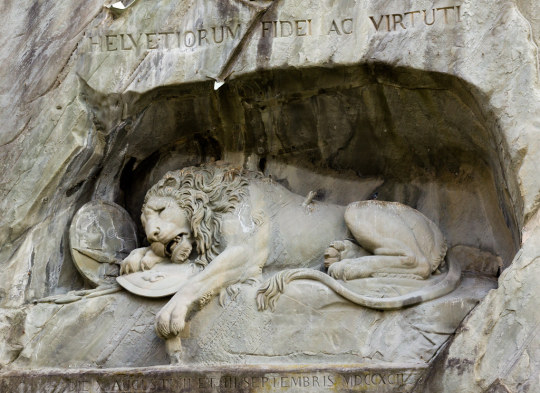
Evening: - Enjoy dinner at Old Swiss House, known for its authentic Swiss dishes like rösti and schnitzel. - Stay overnight in Lucerne. Recommended hotel: Hotel des Balances, a charming riverside boutique hotel. Book a room in Hotel des Balances Day 2: Mount Pilatus or Mount Titlis
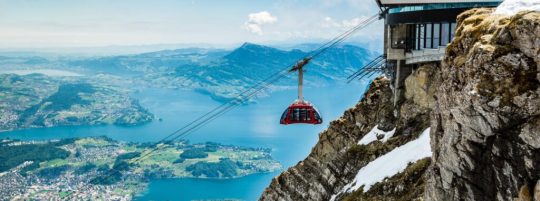
Morning: - Mount Pilatus: Take a boat ride across Lake Lucerne to Alpnachstad and hop on the world’s steepest cogwheel railway to the summit. Enjoy panoramic views and alpine activities. - Alternatively, visit Mount Titlis for snow-covered peaks and the thrilling Titlis Cliff Walk.
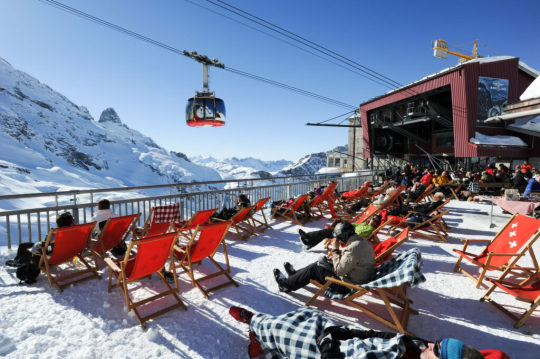
Afternoon: - Have lunch at one of the mountain-top restaurants and soak in the scenery. - Descend in the afternoon, returning to Lucerne. Evening: - Explore Lucerne’s local nightlife or relax by the lake. - Stay overnight in Lucerne. Day 3: Interlaken and Jungfraujoch
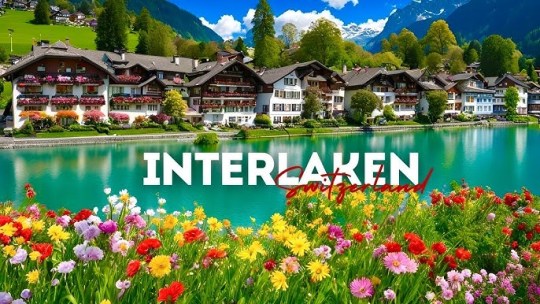
Morning: - Take a train to Interlaken, a gateway to the Bernese Oberland region. - Board the Jungfraujoch Railway, known as the "Top of Europe." The journey offers spectacular alpine views as you ascend to Europe’s highest train station.
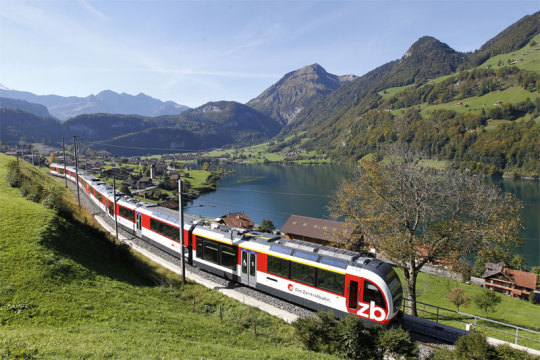
Afternoon: - Explore the Ice Palace and Sphinx Observation Deck, and take in the breathtaking Aletsch Glacier. - Enjoy a traditional Swiss lunch at a restaurant atop Jungfraujoch.
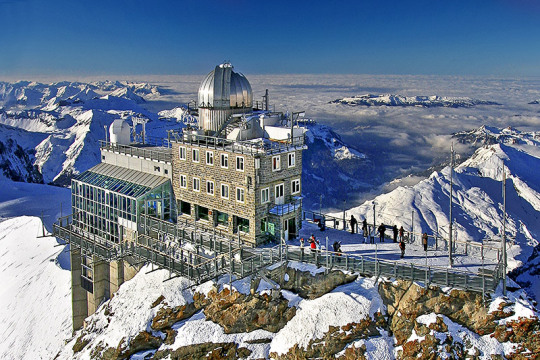
Evening: - Return to Interlaken and stroll along the shores of Lake Brienz or Lake Thun. - Stay overnight at Victoria Jungfrau Grand Hotel & Spa for a luxurious experience.

Book a room in Victoria Jungfrau Grand Hotel & Spa Day 4: Zermatt and the Glacier Express Morning:
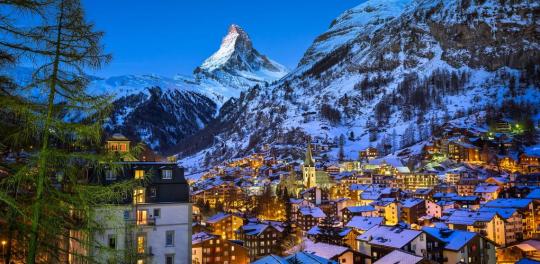
- Travel to Zermatt, a car-free mountain village at the base of the Matterhorn. - Stroll through the charming streets and visit the Matterhorn Museum to learn about the history of this iconic peak. Afternoon: - Board the Glacier Express, Switzerland’s most scenic train, offering panoramic views of the Alps as it traverses gorges, valleys, and tunnels.
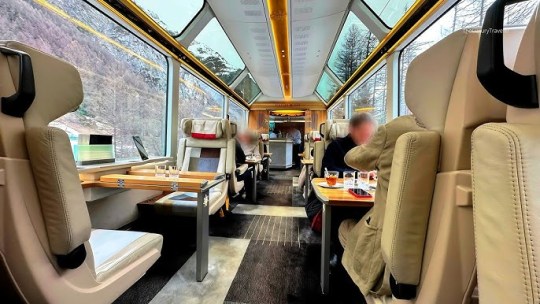
Evening: - Dine at Restaurant Chez Heini, known for its cozy ambiance and delicious lamb dishes. - Stay overnight at The Omnia, a stylish hotel with exceptional Matterhorn views. Book a hotel room in The Omnia

Travel Tips - Swiss Travel Pass: Invest in this pass for unlimited travel on trains, buses, and boats. It also covers many mountain excursions.

- Language: Switzerland has four official languages – German, French, Italian, and Romansh. English is widely spoken. - Currency: The Swiss Franc (CHF) is used. Credit cards are widely accepted. - Seasonal Packing: Pack layers, as mountain weather can change quickly. Gastronomy Highlights - Fondue: Cheese fondue is a must-try, best enjoyed in a cozy alpine setting. - Rösti: A crispy potato dish often served with meats and vegetables. - Swiss Chocolate: Indulge in premium Swiss chocolates from brands like Lindt or Sprüngli. - Raclette: Melted cheese served with potatoes, pickles, and cured meats.
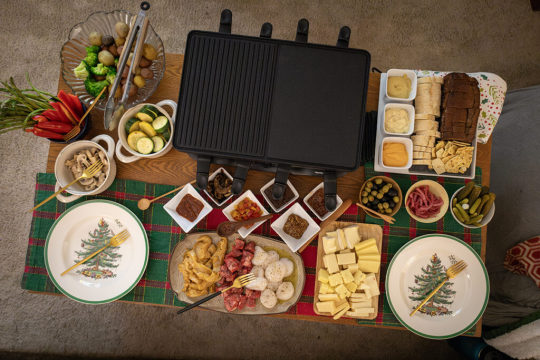
Additional Attractions - Bern: Visit the medieval old town and Zytglogge clock tower. - Lauterbrunnen Valley: Known for its stunning waterfalls and charming villages. - Open-Air Railway Cars: For an unforgettable experience, try the GoldenPass Line or Bernina Express, which feature open-air cars during summer.
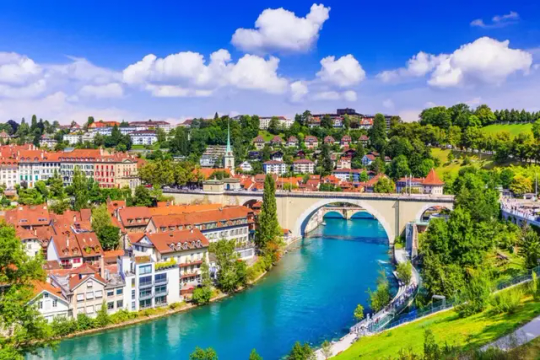


Read the full article
0 notes
Link
Check out this listing I just added to my Poshmark closet: Bardejov Slovakia Town Oversized Picture Guide Book Hardcover 2019 English New.
0 notes
Text
Top Tourist Spots in Germany to Visit During Your Study Abroad

Germany is a country rich in history, culture, and stunning landscapes. As an international student, studying abroad in Germany offers you the unique opportunity to explore its many tourist spots. Whether you are a history buff, nature lover, or just looking to have some fun, Germany has something for everyone. Here are the top tourist spots you shouldn't miss during your study abroad adventure in Germany.
1. Berlin
As the capital city, Berlin is a must-visit. Known for its vibrant culture, history, and nightlife, Berlin offers numerous attractions such as the Brandenburg Gate, Berlin Wall, Museum Island, and the Reichstag Building. Don’t miss the chance to explore its diverse neighborhoods and enjoy the eclectic food scene.
Read More: German Education Consultant
2. Munich
Famous for its Oktoberfest, Munich is a city where tradition meets modernity. Visit the Marienplatz, Nymphenburg Palace, and the Deutsches Museum. Enjoy a relaxing day in the English Garden or take a trip to the nearby Neuschwanstein Castle, which looks like it’s straight out of a fairy tale.
Read
3. Heidelberg
Heidelberg is known for its picturesque landscapes and romantic charm. The Heidelberg Castle, Old Bridge, and the Philosophers' Walk offer breathtaking views of the city and the Neckar River. It's a perfect spot for history lovers and those looking to enjoy the serene beauty of Germany.
4. Cologne
Cologne is famous for its impressive cathedral, the Kölner Dom, which is a UNESCO World Heritage site. The city also offers a variety of museums, such as the Chocolate Museum and the Roman-Germanic Museum. The vibrant carnival celebrations and the bustling Rheinauhafen district are also major attractions.
Read More: Study in Germany
5. Hamburg
As Germany's second-largest city, Hamburg boasts a lively port area, rich maritime history, and modern architecture. Visit the Miniatur Wunderland, the Elbphilharmonie concert hall, and take a boat tour of the harbor. St. Pauli's nightlife and the Reeperbahn are also worth exploring.
6. Dresden
Dresden, known as the "Florence of the Elbe," is renowned for its baroque architecture and art treasures. Explore the Zwinger Palace, Frauenkirche, and the Semperoper. The Elbe River and its surrounding areas offer scenic views perfect for leisurely strolls.
7. Frankfurt
Frankfurt is Germany's financial hub, but it also has a lot to offer tourists. The city’s skyline, Römerberg, and the Goethe House are popular spots. The Palmengarten botanical garden and the Städel Museum are also must-sees.
8. The Black Forest
If you're a nature enthusiast, the Black Forest is a must-visit destination. Famous for its dense woods, charming villages, and cuckoo clocks, the area is perfect for hiking, biking, and relaxing in thermal spas. Don’t forget to try the Black Forest cake!
9. The Romantic Road
The Romantic Road is a scenic route that takes you through some of Germany's most beautiful towns and landscapes. From Würzburg to Füssen, you’ll experience medieval towns, castles, and picturesque countryside. Highlights include Rothenburg ob der Tauber and the Neuschwanstein Castle.
10. Nuremberg
Nuremberg is a city rich in medieval architecture and history. Visit the Imperial Castle, the old town, and the Nuremberg Trials Memorial. The city's Christmas market is one of the oldest and most famous in Germany.
Conclusion
Exploring Germany during your study abroad experience will not only enhance your cultural understanding but also provide unforgettable memories. From bustling cities to serene countryside, Germany’s tourist spots offer something for every type of traveler. So pack your bags, grab your camera, and get ready to discover all that this beautiful country has to offer!
0 notes